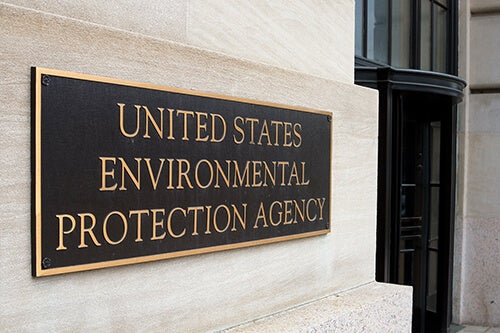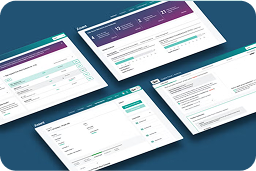Our regulatory subject matter experts answer questions on a range of regulatory topics associated with supply chain data management. Their insights are highlighted here to help educate compliance professionals. Here are the top five questions our Regulatory team has responded to over the past month.
Question: We survey our supply chains to collect information for several different regulations. How do we know or ensure we are actually compliant?
Answer: “Am I compliant?” isn’t a question with an easy answer. Often companies are hoping for a concrete benchmark to meet, such as a percentage of suppliers that must submit information, but that’s unfortunately not how it works.
The goal of compliance is for companies to understand, carry out and document the necessary due diligence associated with applicable regulations and demonstrate their efforts to meet legislative requirements. This means the process must be carried out over time, rather than meeting a one-time goal.
That said, achieving a high supplier response rate is important to overall data quality, but regulatory authorities are likely to consider broader questions, including:
- Is the compliance program ongoing and defined within a process?
- Is the program sufficient to address applicable risks?
- Is the program improving over time?
- Is the company accurately communicating regulatory information to its stakeholders?
- Is the company supported by a plan to remediate discovered non-compliance?
In essence, a company can be more confident in compliance when it exercises strong due diligence activities and invests in maintaining and improving its processes. To learn more, you can read Assent’s whitepaper on the importance of due diligence to compliance.
Question: I have a component manufactured before Directive (EU) 2015/863 went into effect, adding four additional chemicals to the original six listed by Restriction of Hazardous Substances (RoHS) 2. My component is certified as compliant with RoHS 2, and still exists in our supply chain. Am I allowed to keep using this component?
Answer: As long as they were compliant with the requirements in force when they were placed on the market, finished good products that were manufactured and placed on the European Union (EU) market prior to the in-force date can still be sold, even if not compliant with the regulation’s updated requirements. This applies only to finished good products, not the components used to make them. All new products manufactured after in-force dates must be compliant with updated regulations.
Question: I am a manufacturer based outside of the EU. If my products are imported into the EU through distributors, can my company set up an ECHA-IT account or will our distributors have to do so in order to submit required information?
Answer: This is a common question because non-EU manufacturers are not in scope of the EU Waste Framework Directive (WFD), but they may want to ensure compliance with the Substances of Concern In articles, as such or complex objects (Products) (SCIP) database reporting requirements to maintain access to the EU market.
The ECHA has published an FAQ document, providing guidance to companies in this and similar situations. In short, companies outside of the EU are not in scope and are not allowed to submit SCIP notifications. The first importer of articles is responsible under the EU WFD, however, they may request data from the non-EU company manufacturing the imported product in order to submit to the database. Importers in the EU may seek to enter a contractual agreement with non-EU companies, listing them as a “foreign user” and granting them access to their ECHA-IT accounts to make SCIP submissions.
The ECHA-IT account must belong to the first importer of the applicable article, and the “foreign user” clause must be agreed upon by both parties.
Question: Can EU RoHS and Registration, Evaluation, Authorisation and Restriction of Chemicals (REACH) Regulation compliance documentation for a product containing short-chain chlorinated paraffins (SCCPs) be used to demonstrate compliance with the Persistent Organic Pollutants (POPs) Regulation?
Answer: Some substances, such as SCCPs, are restricted by several regulations, including the REACH and POPs regulations. However, it is important to provide documentation to satisfy specific requirements laid out in respective regulations. For example, under the POPs Regulation, the presence of SCCPs must be below 0.15 percent at the article level, or one percent in mixtures. The REACH Regulation has no such specific restriction. Using REACH compliance information to check for SCCPs will require the collection of concentration data to properly demonstrate compliance with the POPs Regulation.
Question: How do we declare compliance under Russian RoHS and what are the data requirements?
Answer: The EAC TR CU 037/2016 Regulation (Russian RoHS or Eurasian Economic Union RoHS) governs the restriction of hazardous substances in electrical and electronic equipment for companies in the Eurasian Economic Union: Armenia, Belarus, Kazakhstan, Kyrgyzstan and Russia. Companies operating in these countries must receive a EAC label (Eurasian Conformity Mark), which is similar to CE markings in the EU.
The data requirements for declarations are as follows:
- Application, which is to be verified by a local representative.
- Articles of incorporation of the local representative (State Registration Certificate, Tax Registration Certificate, Charter).
- Copy of the valid contract with local representative with the Liability Clause (verified by the manufacturer and the local representative).
- Technical description for all declared products.
- Test reports or other documents that confirm the compliance with the RoHS Directive (if available).
Samples may also be required, and it’s important to note that the EAC marking must be placed on the product.
For more questions and answers, visit the last edition of Assent’s Ask the Experts blog.
Assent’s regulatory experts frequently participate in events such as webinars to educate compliance professionals. They also inform our clients’ regulatory programs. To learn more, contact us today.









